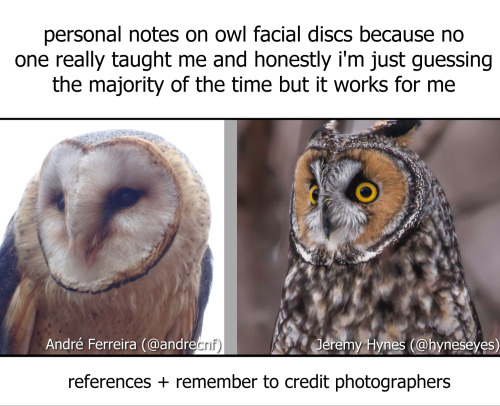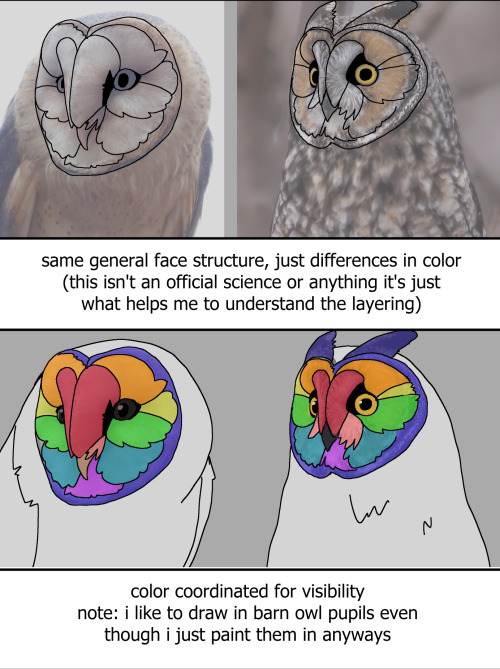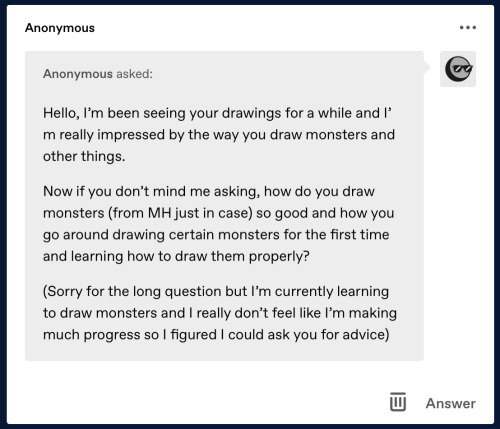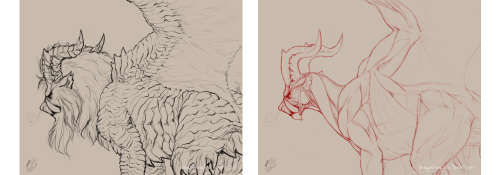Comfort
Your art is amazing!!! I love the stunning use of colour! Do you have a process to pic colours or just mess with them until you get something you like? :)
Thank you, you’re so sweet!! When I draw my own characters I just pick colors I like but for fanart there’s a few things I do. I’ll share my process here in hopes it might help!

Comfort
When working with vibrant colors I like to soften them by warming them up, making them similar to each other, and avoiding pure colors altogether. Our eyes are sensitive so I never want my colors to be too bright or contrasting.

Unique
Tertiary colors are more unique and calming than primary colors so I use them a lot to punch up my art without making things too intense. It also puts a fun twist on designs when we use colors that are close but not exactly like the originals.

Balance
Balancing colors is so important! It’s my final step to completing every color palette I make. There has to be a variety, contrast, and a connection between colors. Adding a little of the same color to all of the others helps to accomplish this. Usually I take a shortcut by adding a color overlay in my painting programs. This is also another reason why I never use pure white or black---those colors will not be affected by color overlays.
There’s also my color post here if anyone wants to know more about color theory and things. Color is a huge deal but it’s really fun!
More Posts from Donutdomain and Others
![[ Download Link ]](https://64.media.tumblr.com/5f429d178bb1fe4870a8c6931415c38e/1c195b3b919b6bc0-22/s500x750/9f3e89788ae15eab900a39fc63f99bd7a543868d.jpg)
![[ Download Link ]](https://64.media.tumblr.com/6dd33d9a47c84fae4004c3891a069032/1c195b3b919b6bc0-70/s500x750/7a350518ca98cd34cd6e5fa9cd463fb933dbcf11.jpg)
![[ Download Link ]](https://64.media.tumblr.com/c6bcee52d8e78ba0e31e786b91f81fc1/1c195b3b919b6bc0-03/s500x750/735d52cfd62421cf43e46a8a710f76dad2c52707.jpg)
![[ Download Link ]](https://64.media.tumblr.com/87c3f0ff1da8e8a917485898808bd63b/1c195b3b919b6bc0-64/s500x750/62e90c66492ac189a3325bbd25965dd635cc65b7.jpg)
![[ Download Link ]](https://64.media.tumblr.com/133564050990bca016611a68fa71a2de/1c195b3b919b6bc0-c1/s500x750/87ea85696f416c49b91f8f64754306f4208b6726.jpg)
![[ Download Link ]](https://64.media.tumblr.com/9a2582c5d3abc3f5cf6ce4587482f493/1c195b3b919b6bc0-c5/s500x750/19c8f03ee111f028acd365ae95b24a04a72e60d9.png)
[ Download Link ]
As promised, it’s finally here! Thank you to all of my patrons for not only the support that made this possible, but for giving me the confidence to work on a big project like this.
Rather than providing any drawing instruction, what this writeup aims to do is help you learn to unpack the decisions being made in a given composition, and articulate what elements in a piece are responsible for its impact. Being able to isolate these qualities in your own art and art that inspires you opens up avenues for improvement regardless of medium, style, or technical skill. This is the first of hopefully many PWYW art ‘tutorials’ from me.
I hope you all enjoy!
HOW DO YOU SHADE THE GOLD PARTSS???? PSLSPSLPSLPSLS

You don't have to take my word as gospel but these are the things I found that work well: ♡
(Please excuse grammatical errors I wrote this with a headache-...)
In my personal experience and process with gold, I find that these few things help me a lot when tackling it:
-whenever you approach gold it's important to asses the medium in which the material presents itself. The two options are the metal itself and any type of golden fabric.
-the shading process for me begins right from the sketch, when mapping out the gold accessory, object or the accent on a piece of clothing I try to get the shape of it to make sense.


It's most important, with golden fabric, to know and imagine how it falls arround and wraps arround a silhouette or body parts, if you want to figure out shading.
-So, when we speak "golden clothing" it revolves arround very sharp shadows, lights and reflections mainly becouse of fabric wrinkles. Golden clothing is pretty easy once you understand the nature of your material-☆
And the rules apply to any other colour!


Original Yellow hue
♡Same rules apply♡
So if you want you can structure your lights and shadows in black, white and grey! It works well to start off if you're not confident with colours as gold can be tricky in that regard...
GREYSCALE- can help you better understand the intensity of lights and shadows in contrast with one another:

You can then focus on colour later after you set up your values.

You'll notice with gold pieces that are much less clothing and much more metal the shadows alter from soft to sharp depending on the physical structure of the object itself.
If you encounter smooth curves it's soft, when it's sudden cuts or edges it's sharp.
Important to keep in mind:
-Gold is a metal = metals are REFLECTIVE.

Metals will reflect light aswell as colours.
They will especially reflect ☆colorful lights.☆
You must always, always, know where the light source is, and how it hits the object/ material.
That's it for now but if you want a more detailed step by step process just ask ^^☆
-Nix🌙



some vaguely coherent notes on owl facial discs because they were the hardest part of the bird for me to figure out and if this helps at least one person then I consider that an epic win
Photos: Barn Owl, Long-eared Owl
Writing Tips
Descriptions in Between Dialogue
✧
⤠ how characters interact with the environment
⇝ moving something, picking something up, looking somewhere
⤠ how the environment interacts with the characters
⇝ weather, other character’s actions or movements
⤠ gestures
⇝ facial expressions, body language
⤠ shifts in position
⇝ standing, sitting, leaning, shifting weight, crossing arms/legs
⤠ physical reactions
⇝ body temperature, fidgeting, heart rate, character quirks
⤠ environmental descriptions
⇝ descriptions using the five senses, setting, character’s appearances
⤠ internal dialogue
⇝ emotional reaction to what was said, reflection of past experiences, connections to other characters/settings/actions
➵ I want to reiterate… descriptions using the five senses ; when in doubt, think of the five senses your character is experiencing and pick what best moves the story forward
How to learn drawing MH monsters

Hey Anon! First of all I’m very honored, thanks a lot!!
You’re asking a very interesting question in my opinion, so I hope you will find a long response interesting as well c:
When I want to learn how to draw a new Monster, I base myself on the Monster’s design (ofc) but also on general knowledge, especially anatomy. Anatomy is crucially important even when drawing creatures that do not exist, simply in order to make them believable!
So if you struggle to draw MH Monsters, that are famous for their ‘realism’ and believability, first ask yourself what level you have in basic anatomy: if you know how skeleton works, muscles work, transcribing it into proportions and joints, things like that.

(Art I made for fun for my RP blog)
I sadly can’t offer you much advice on how to learn it, because anatomy is partly intuitive to me; and lots of my artistic anatomy studies were more centered around human anatomy (however, a lot of muscle groups are similar to animals, so even my knowledge of humans is useful when drawing monsters). I also have to mention I’m a vet student, and we had medical anatomy classes in the first year, which helped a lot as well; but I’m sure you can find online resources that will teach you the basics for art!
Keep reading
-
 onionrimgs liked this · 1 month ago
onionrimgs liked this · 1 month ago -
 percyaugod liked this · 1 month ago
percyaugod liked this · 1 month ago -
 randompanontheinternet liked this · 1 month ago
randompanontheinternet liked this · 1 month ago -
 natto-axolotl reblogged this · 1 month ago
natto-axolotl reblogged this · 1 month ago -
 rataccatak liked this · 2 months ago
rataccatak liked this · 2 months ago -
 dapperdastardly liked this · 2 months ago
dapperdastardly liked this · 2 months ago -
 sonyaxtunggie liked this · 3 months ago
sonyaxtunggie liked this · 3 months ago -
 sillystanleystuff liked this · 3 months ago
sillystanleystuff liked this · 3 months ago -
 ac-blueberrypaw reblogged this · 5 months ago
ac-blueberrypaw reblogged this · 5 months ago -
 elementadroid liked this · 5 months ago
elementadroid liked this · 5 months ago -
 snarkissist liked this · 7 months ago
snarkissist liked this · 7 months ago -
 mrpipi6 liked this · 7 months ago
mrpipi6 liked this · 7 months ago -
 longbird47 liked this · 8 months ago
longbird47 liked this · 8 months ago -
 disgruntledkittycat liked this · 8 months ago
disgruntledkittycat liked this · 8 months ago -
 veumaxine liked this · 8 months ago
veumaxine liked this · 8 months ago -
 twadi-gurl reblogged this · 9 months ago
twadi-gurl reblogged this · 9 months ago -
 give-bug liked this · 10 months ago
give-bug liked this · 10 months ago -
 twadi-gurl reblogged this · 10 months ago
twadi-gurl reblogged this · 10 months ago -
 geckothrowingafit reblogged this · 11 months ago
geckothrowingafit reblogged this · 11 months ago -
 cryingpinktears liked this · 11 months ago
cryingpinktears liked this · 11 months ago -
 geckothrowingafit reblogged this · 11 months ago
geckothrowingafit reblogged this · 11 months ago -
 geckothrowingafit liked this · 11 months ago
geckothrowingafit liked this · 11 months ago -
 a-cat-with-a-paintbrush reblogged this · 1 year ago
a-cat-with-a-paintbrush reblogged this · 1 year ago -
 twadi-gurl reblogged this · 1 year ago
twadi-gurl reblogged this · 1 year ago -
 slugsmp4 reblogged this · 1 year ago
slugsmp4 reblogged this · 1 year ago -
 slugsmp4 liked this · 1 year ago
slugsmp4 liked this · 1 year ago -
 local-town-racoon liked this · 1 year ago
local-town-racoon liked this · 1 year ago -
 prussianvenom liked this · 1 year ago
prussianvenom liked this · 1 year ago -
 p2ii liked this · 1 year ago
p2ii liked this · 1 year ago -
 ukgbug liked this · 1 year ago
ukgbug liked this · 1 year ago -
 miserylovesbees liked this · 1 year ago
miserylovesbees liked this · 1 year ago -
 skinny-beanz liked this · 1 year ago
skinny-beanz liked this · 1 year ago -
 decepticookie liked this · 1 year ago
decepticookie liked this · 1 year ago -
 makemeabedwetter liked this · 1 year ago
makemeabedwetter liked this · 1 year ago -
 dragon-drop1477 reblogged this · 1 year ago
dragon-drop1477 reblogged this · 1 year ago -
 rblade04 liked this · 1 year ago
rblade04 liked this · 1 year ago -
 theorangedead reblogged this · 1 year ago
theorangedead reblogged this · 1 year ago -
 finaldelta reblogged this · 1 year ago
finaldelta reblogged this · 1 year ago -
 makhaime reblogged this · 1 year ago
makhaime reblogged this · 1 year ago -
 tiramango liked this · 1 year ago
tiramango liked this · 1 year ago -
 actionbird liked this · 1 year ago
actionbird liked this · 1 year ago -
 prismatician liked this · 1 year ago
prismatician liked this · 1 year ago -
 aidoneira liked this · 1 year ago
aidoneira liked this · 1 year ago -
 capsaicinoid reblogged this · 1 year ago
capsaicinoid reblogged this · 1 year ago -
 tealdandelions reblogged this · 1 year ago
tealdandelions reblogged this · 1 year ago -
 mulaputa liked this · 1 year ago
mulaputa liked this · 1 year ago

I just reblog fun facts/tipsScience, nature, geology facts etc! + art & writing tips!
67 posts




